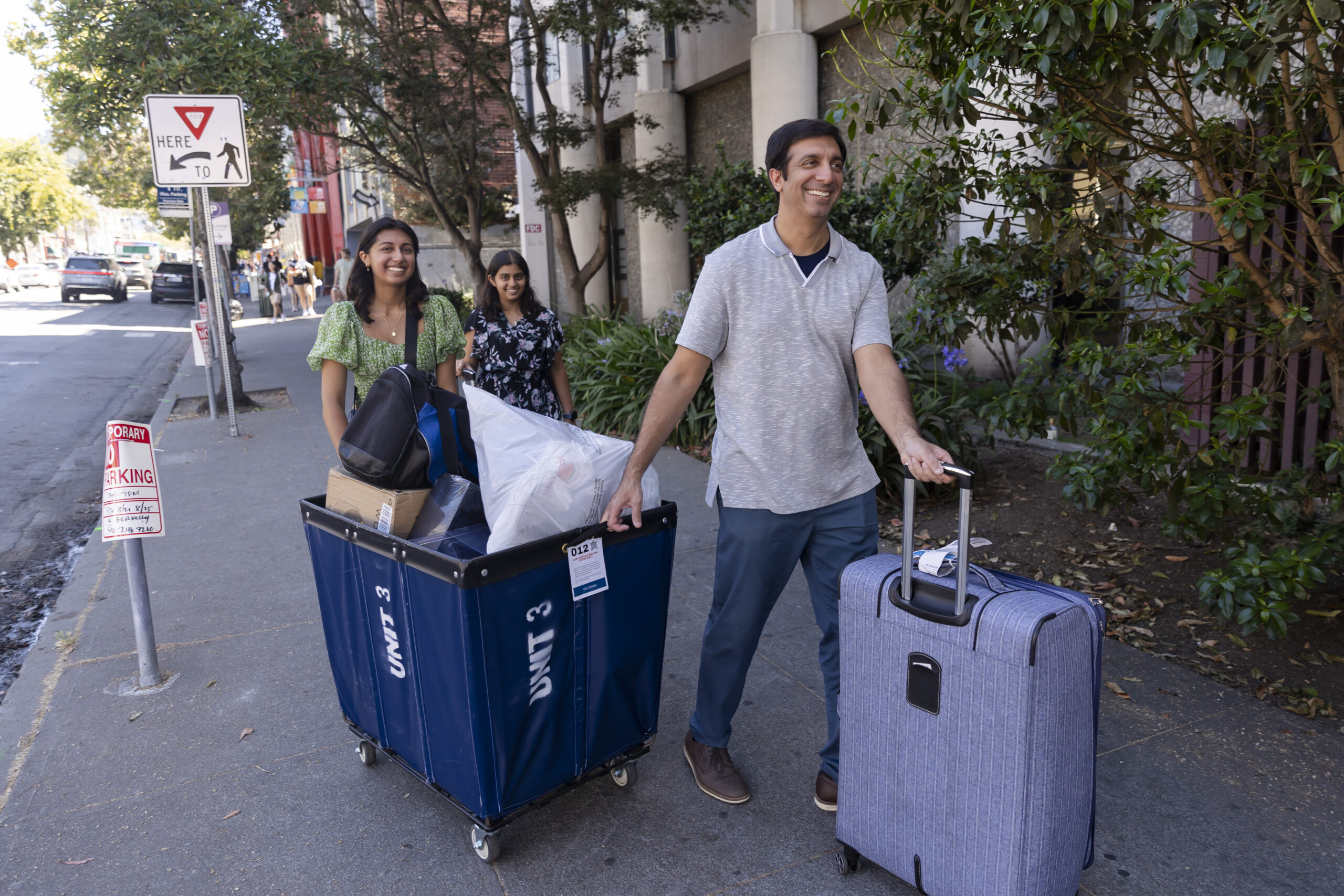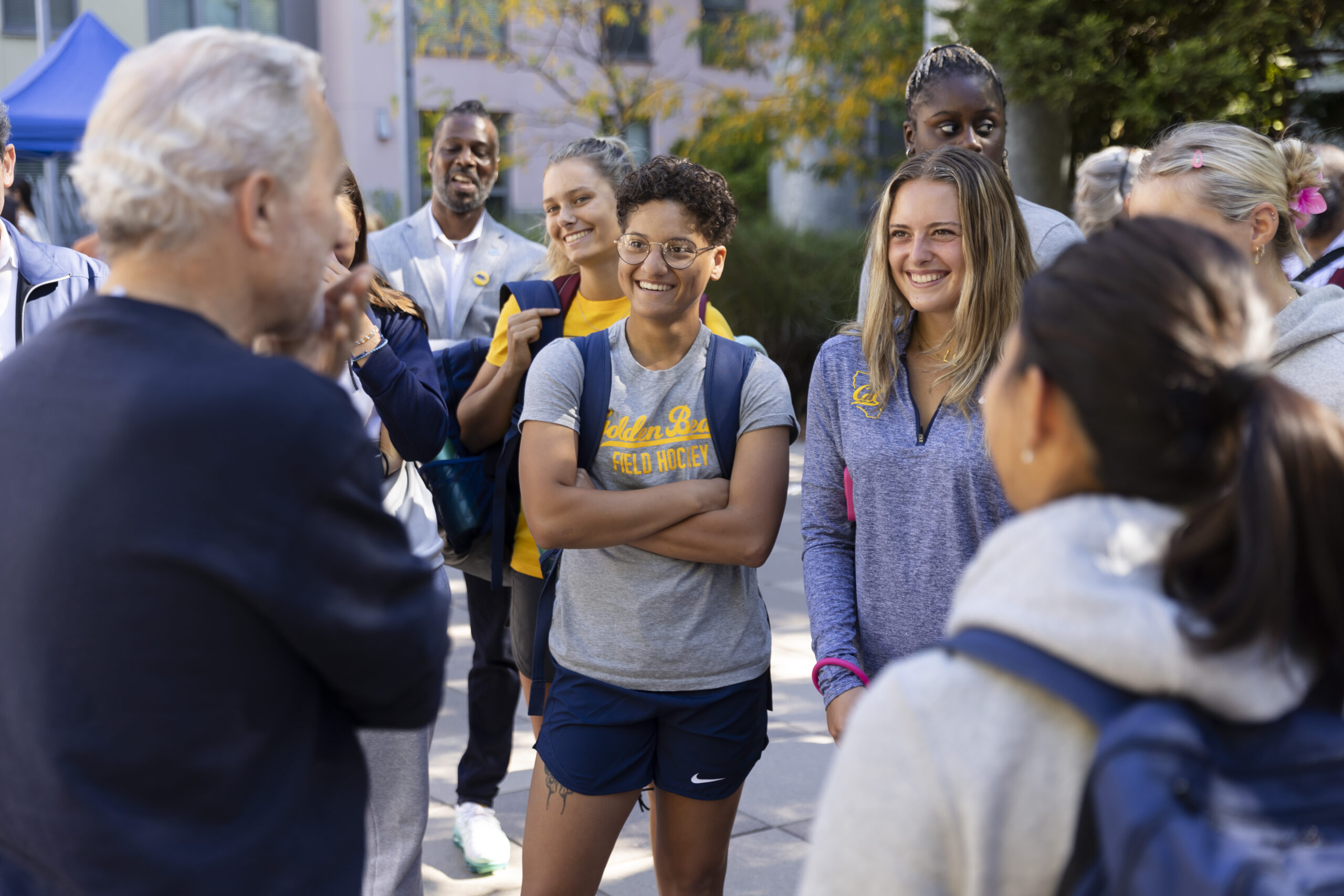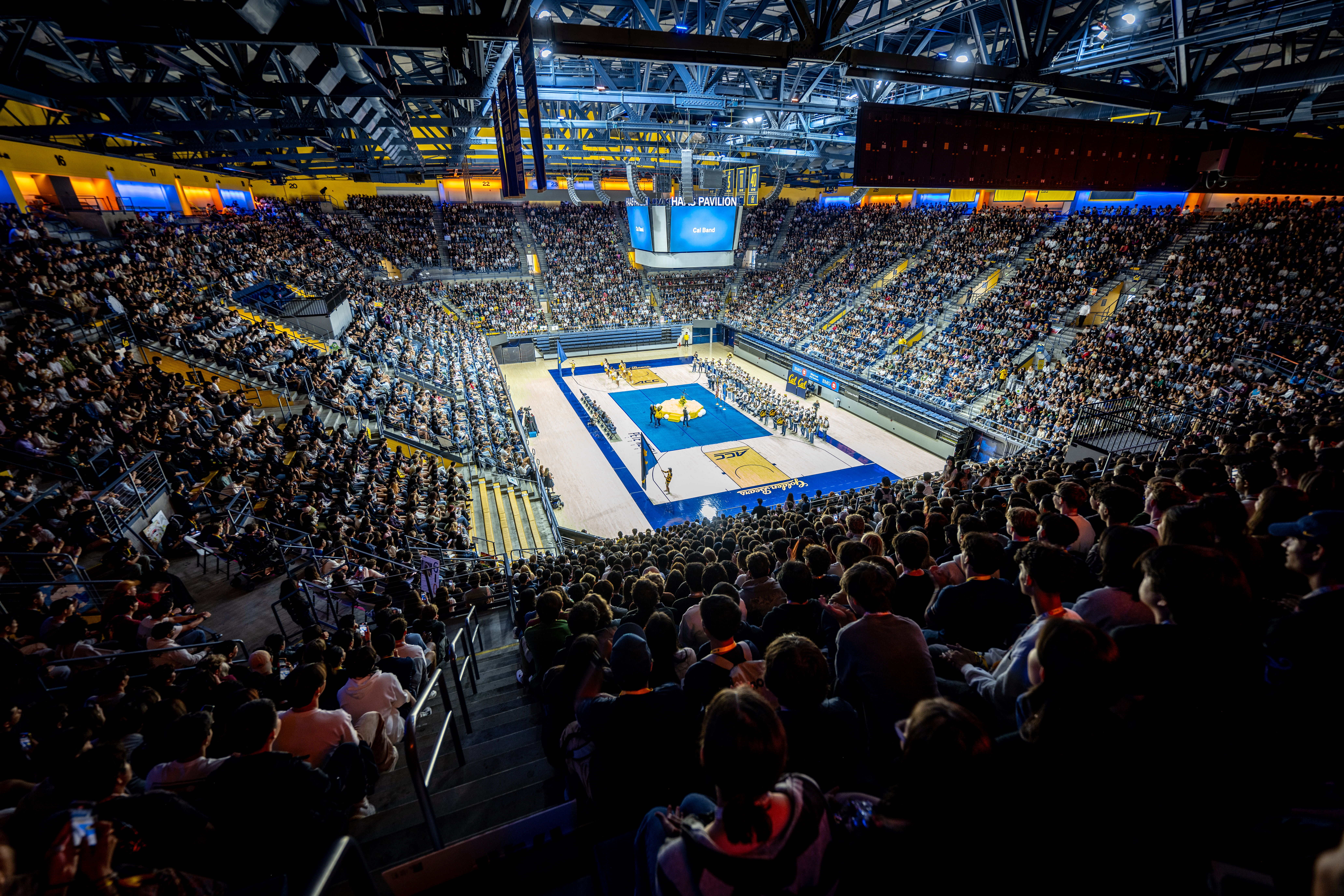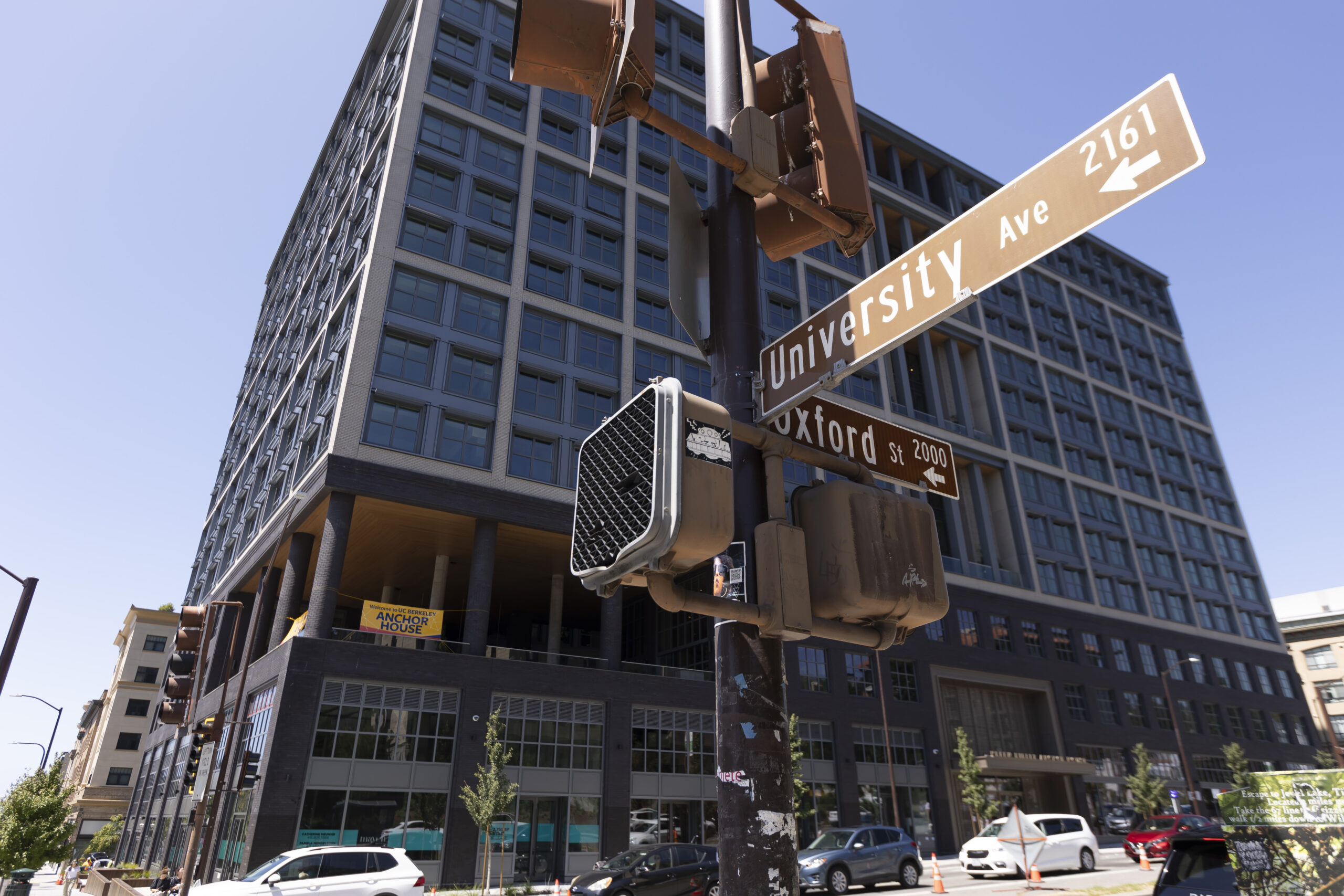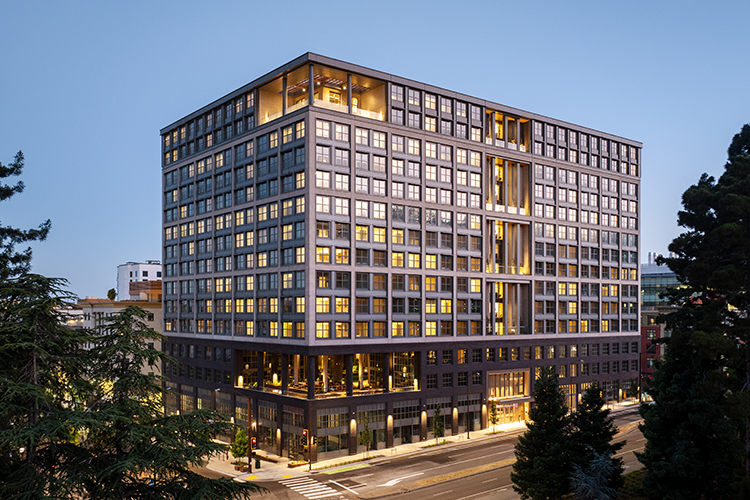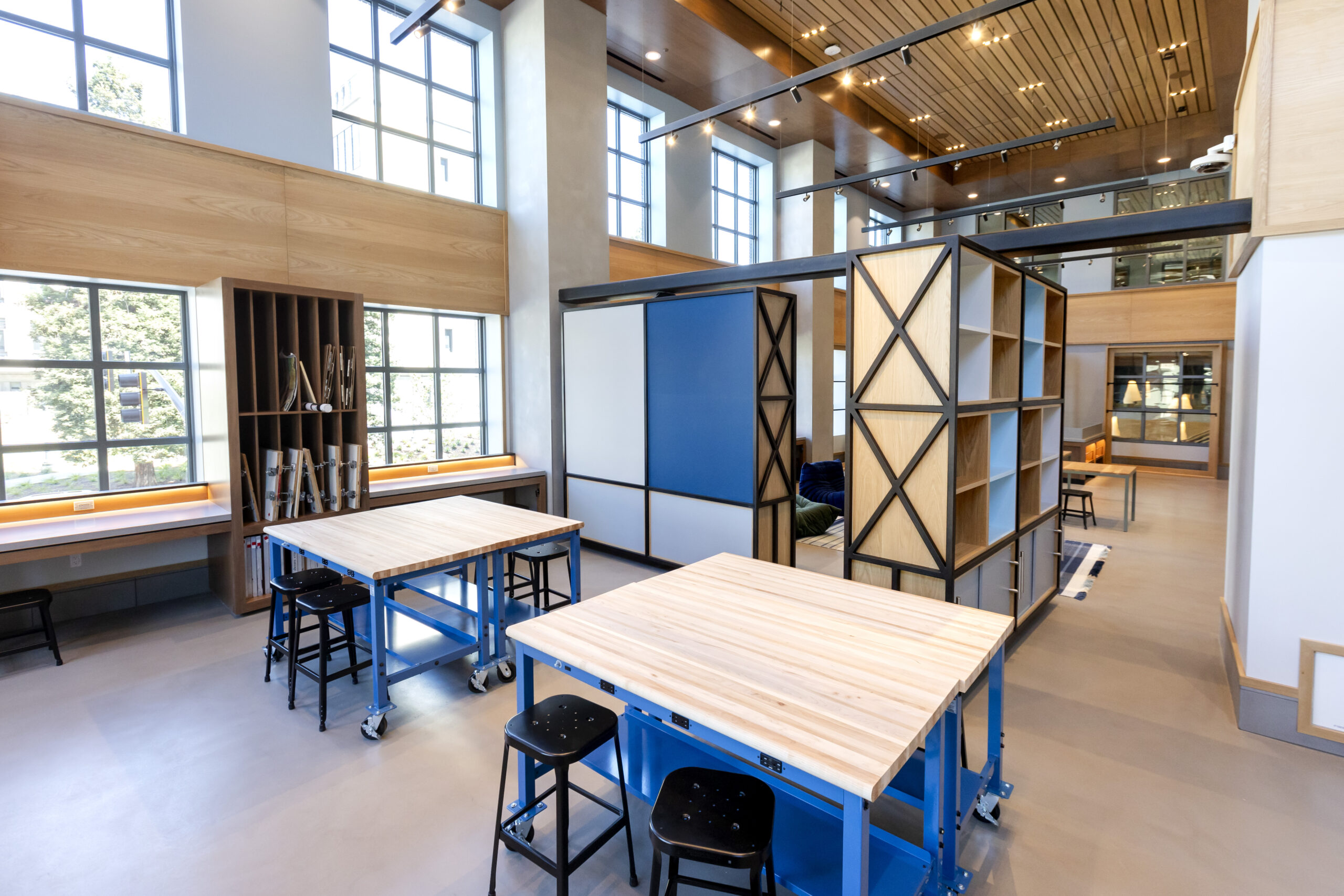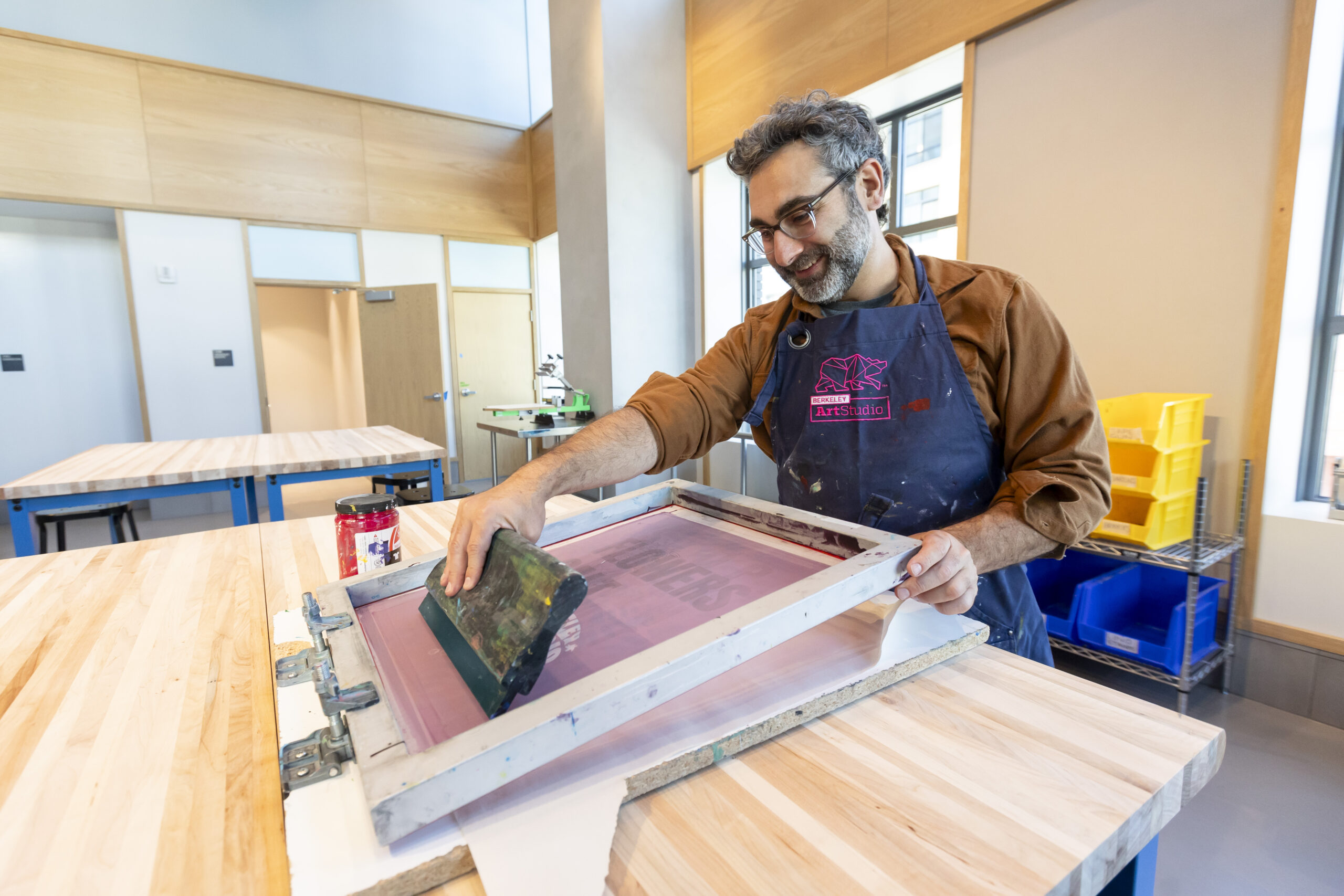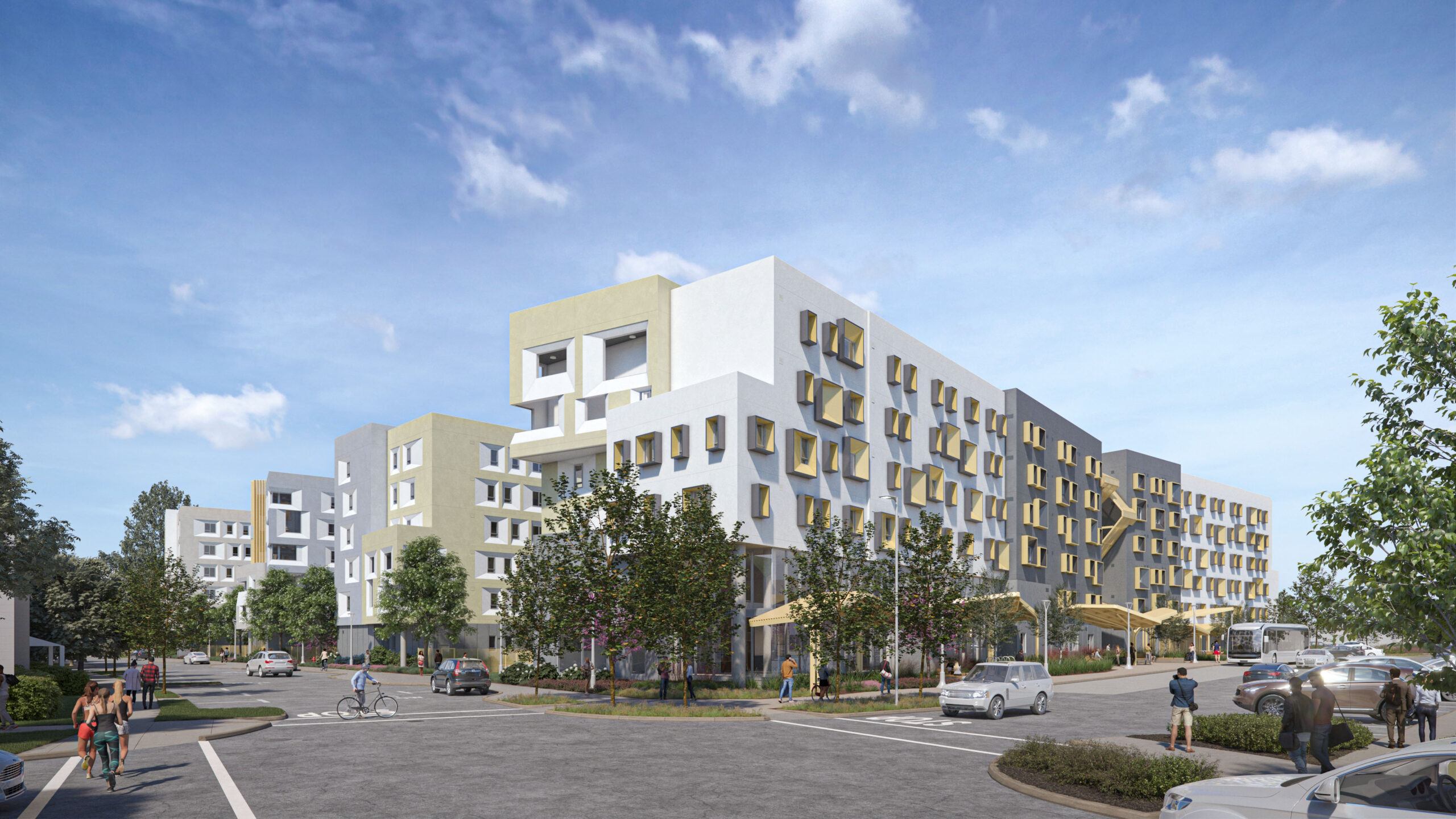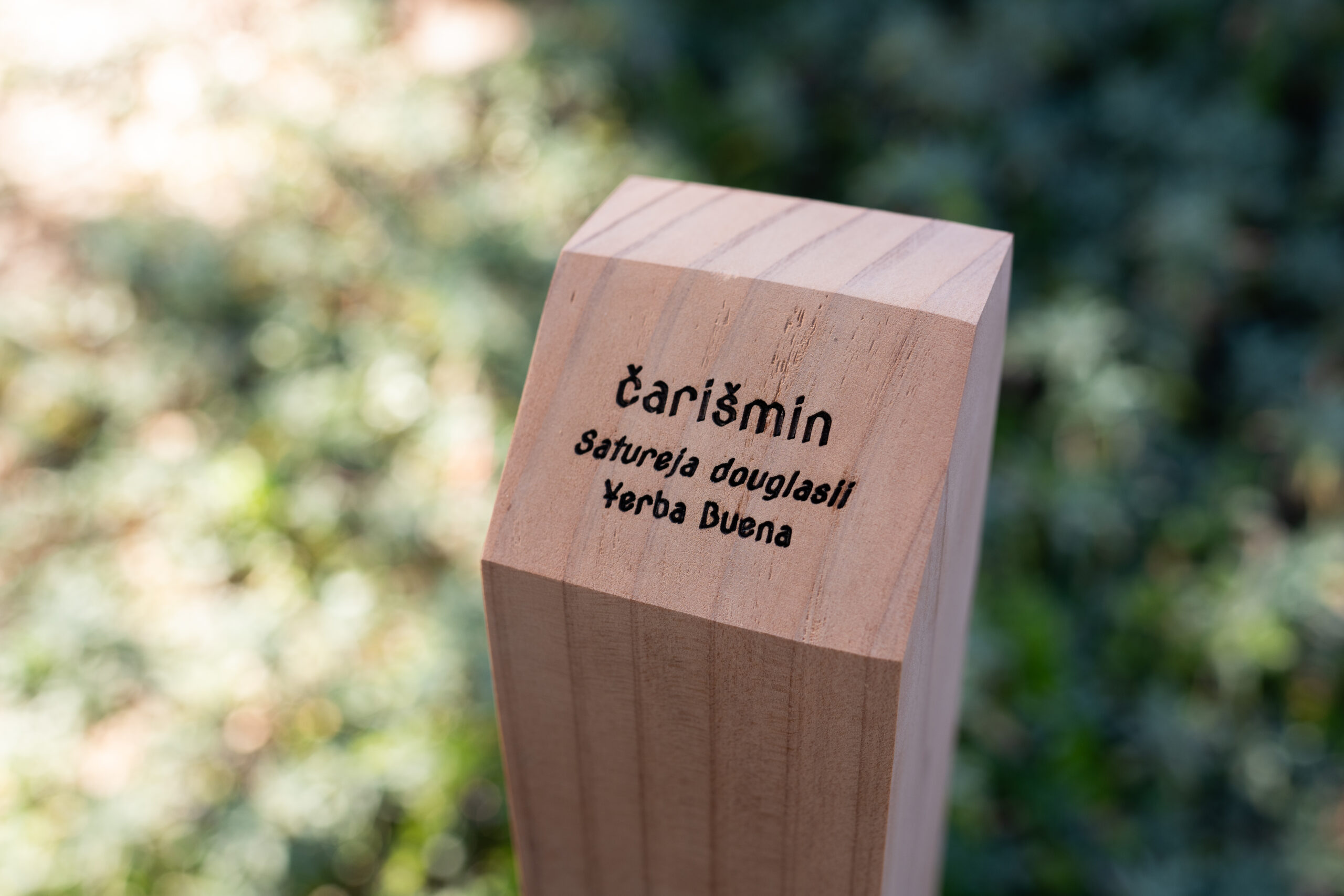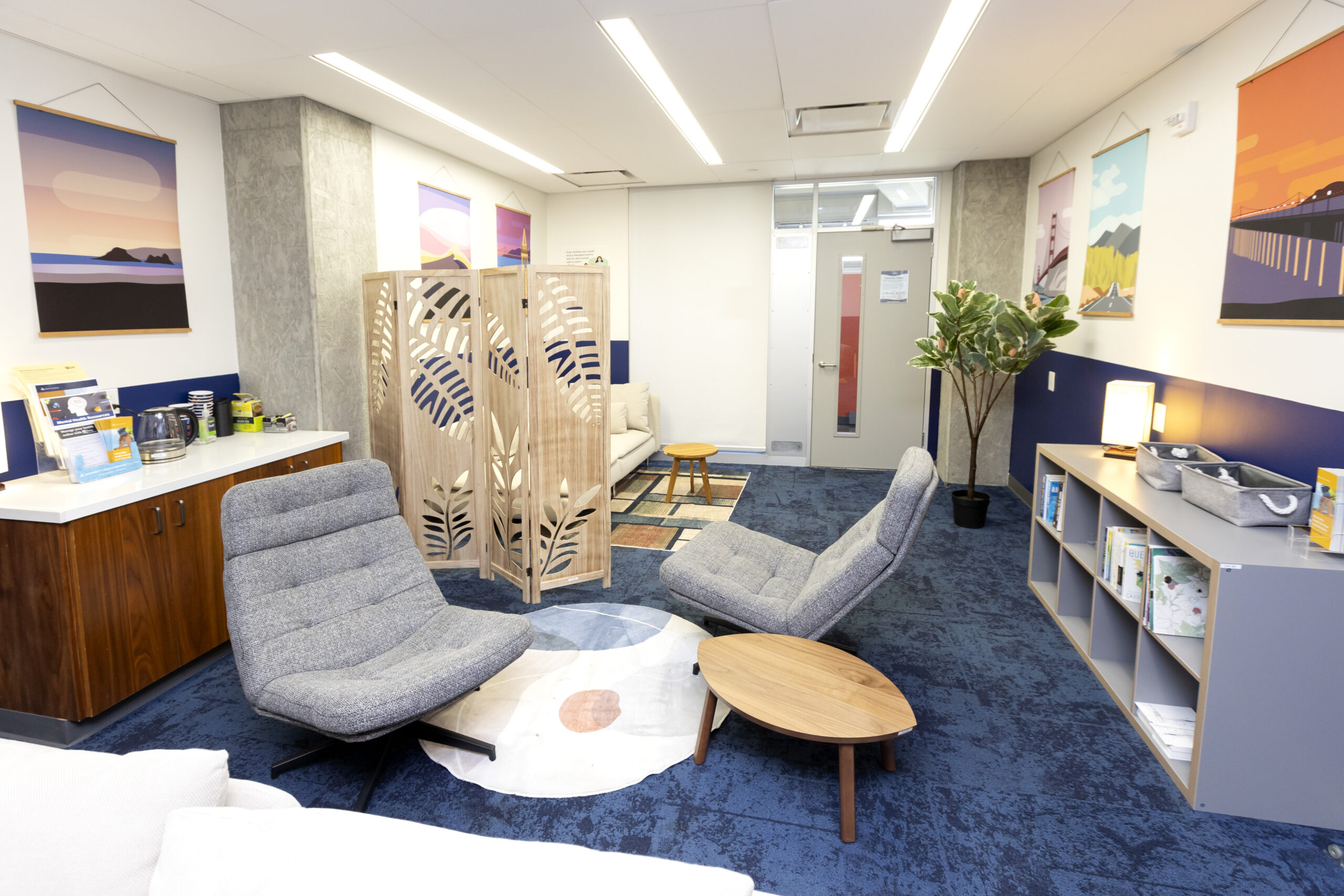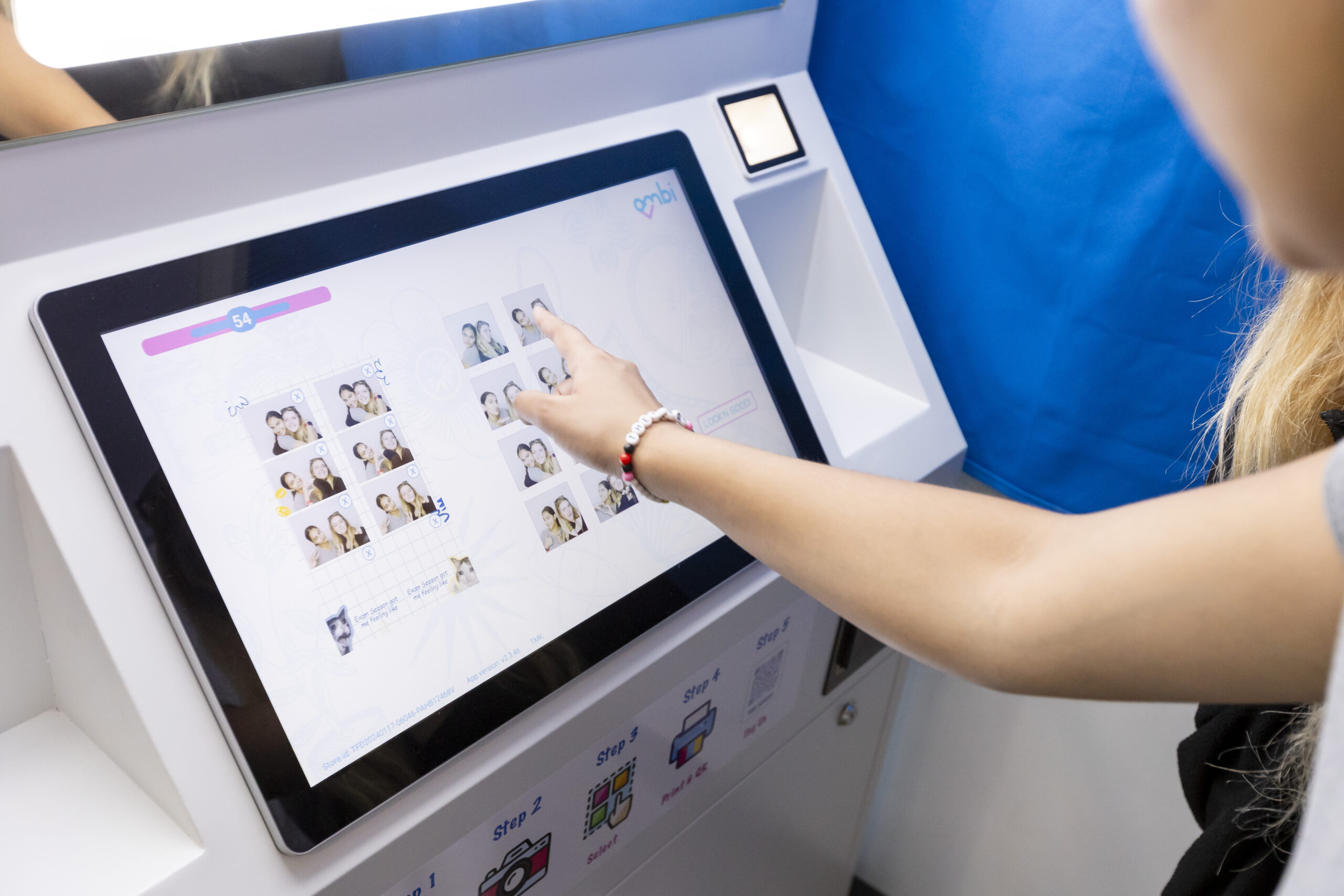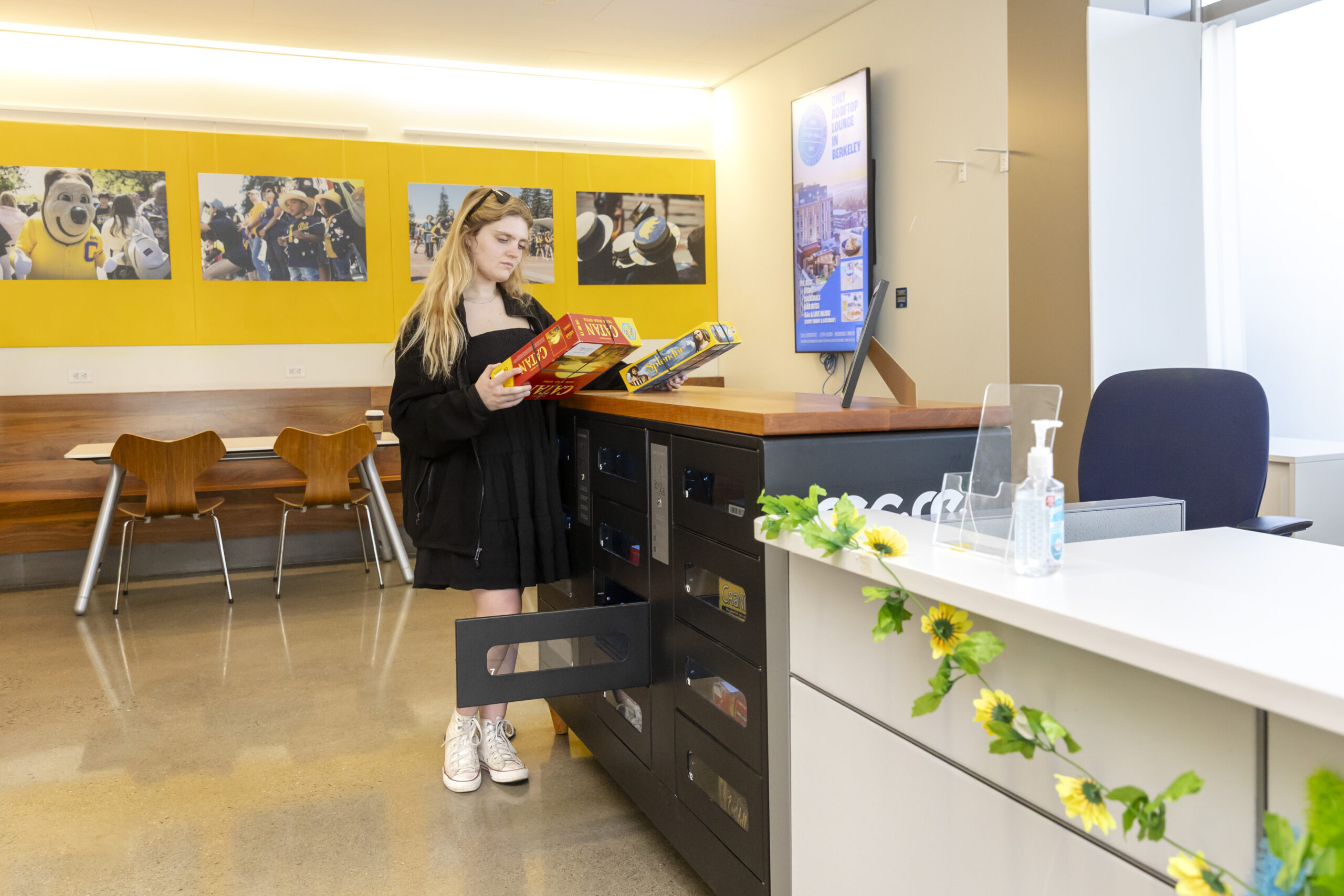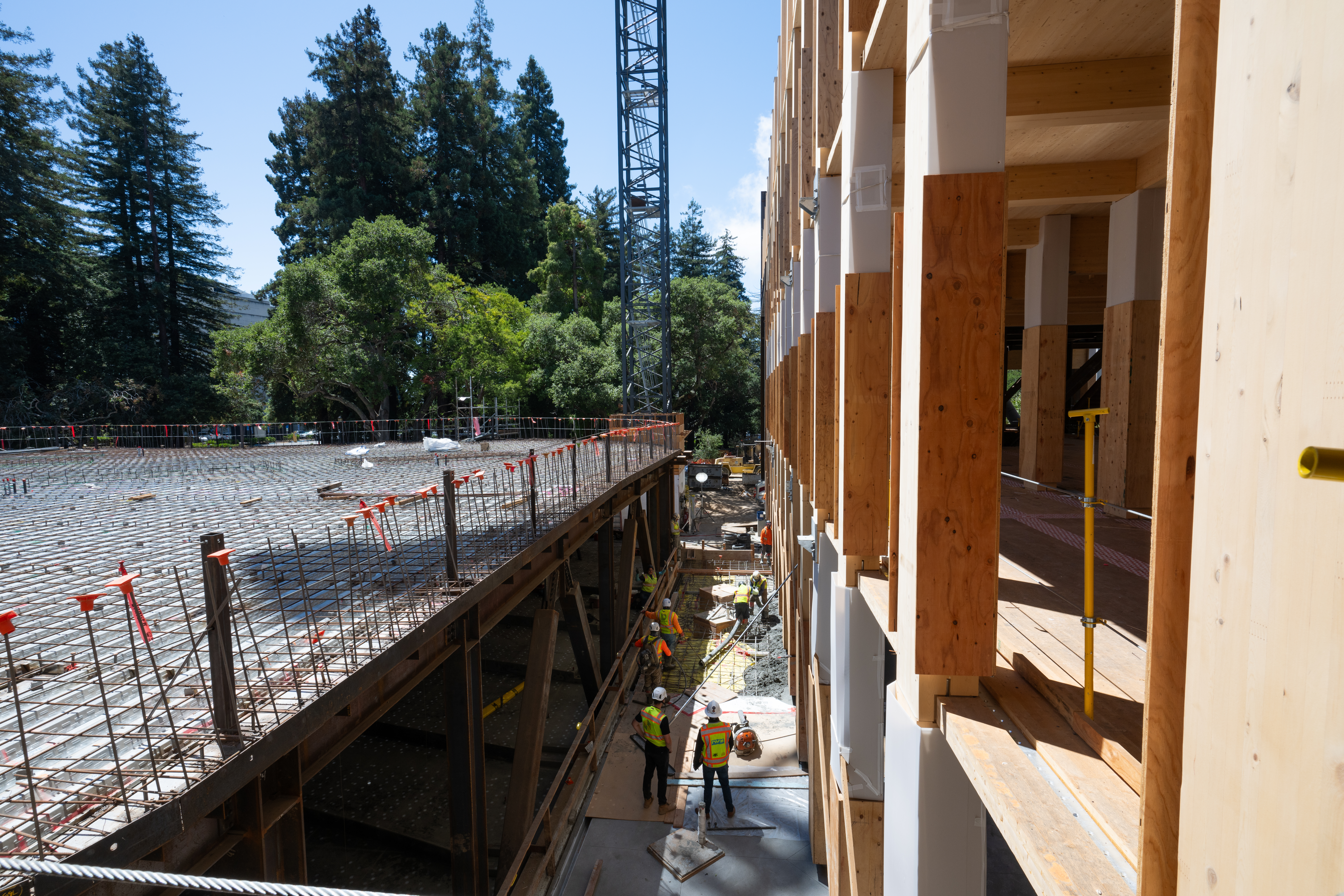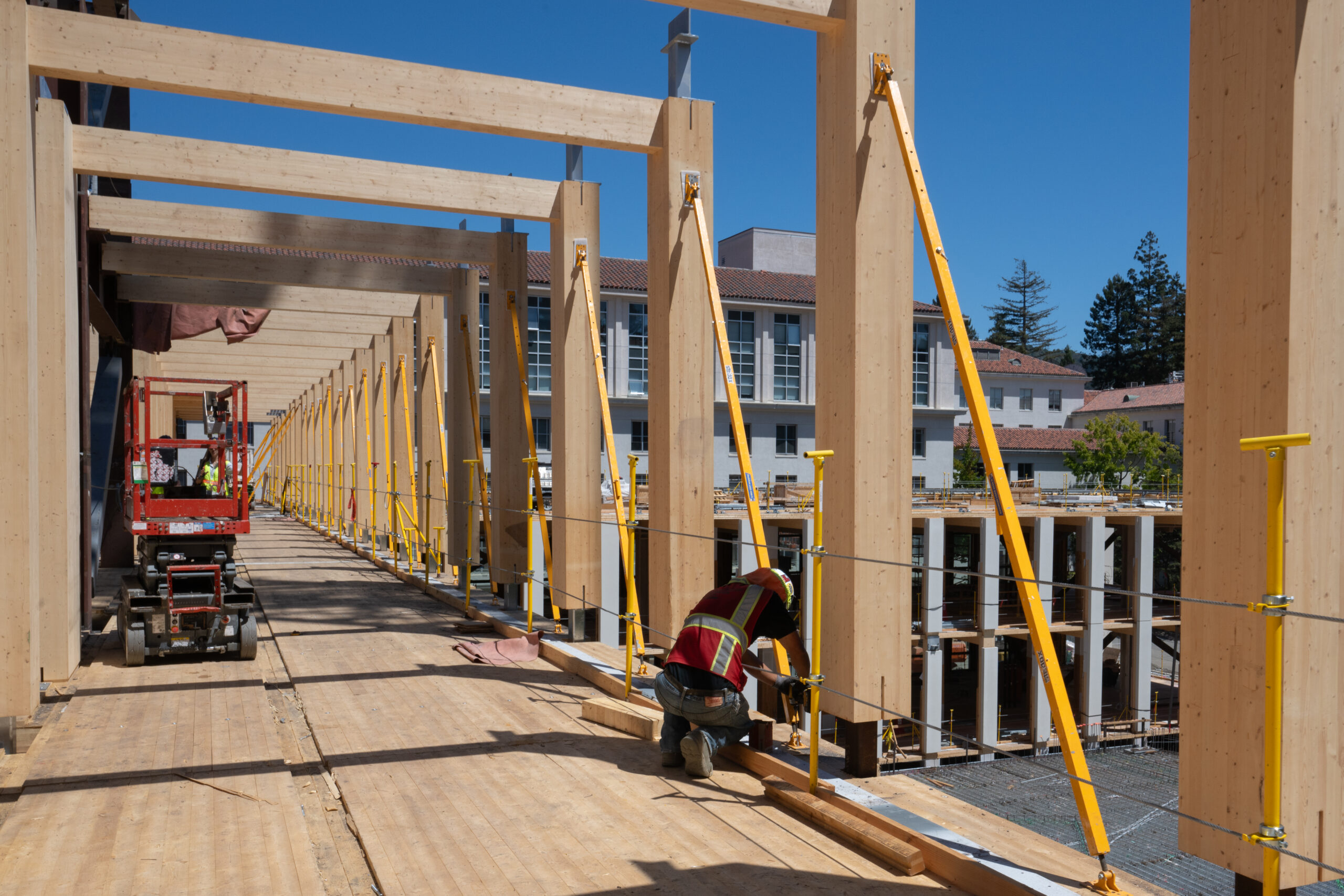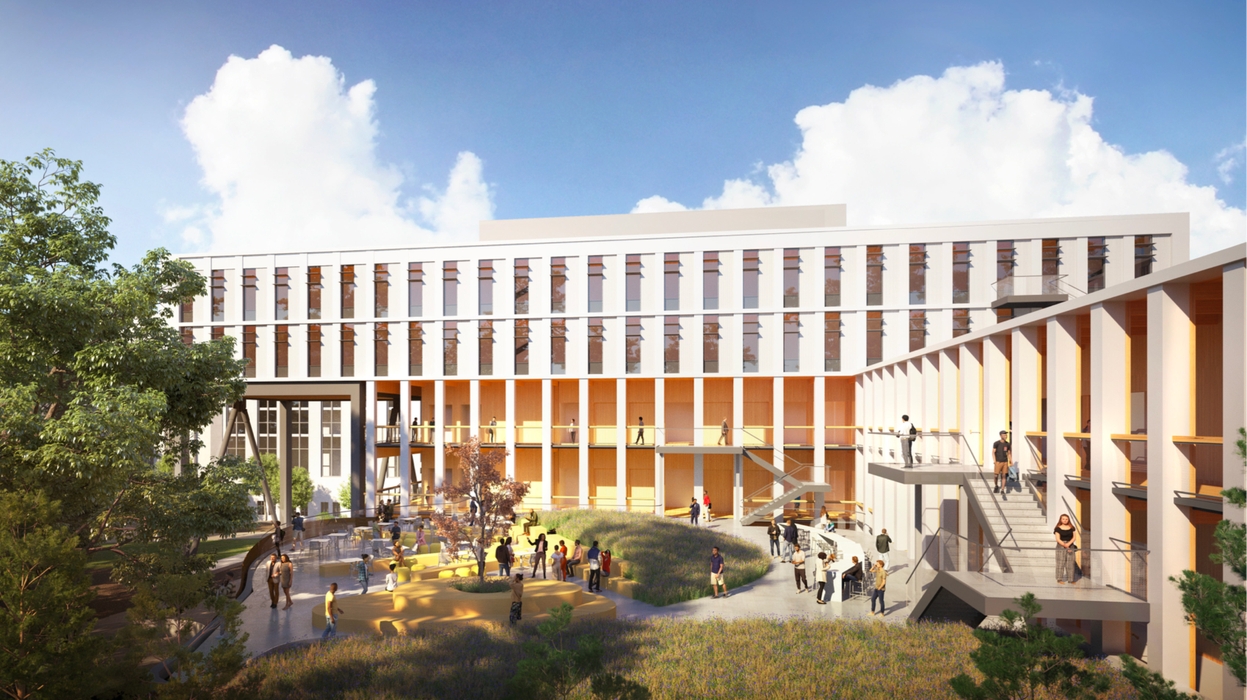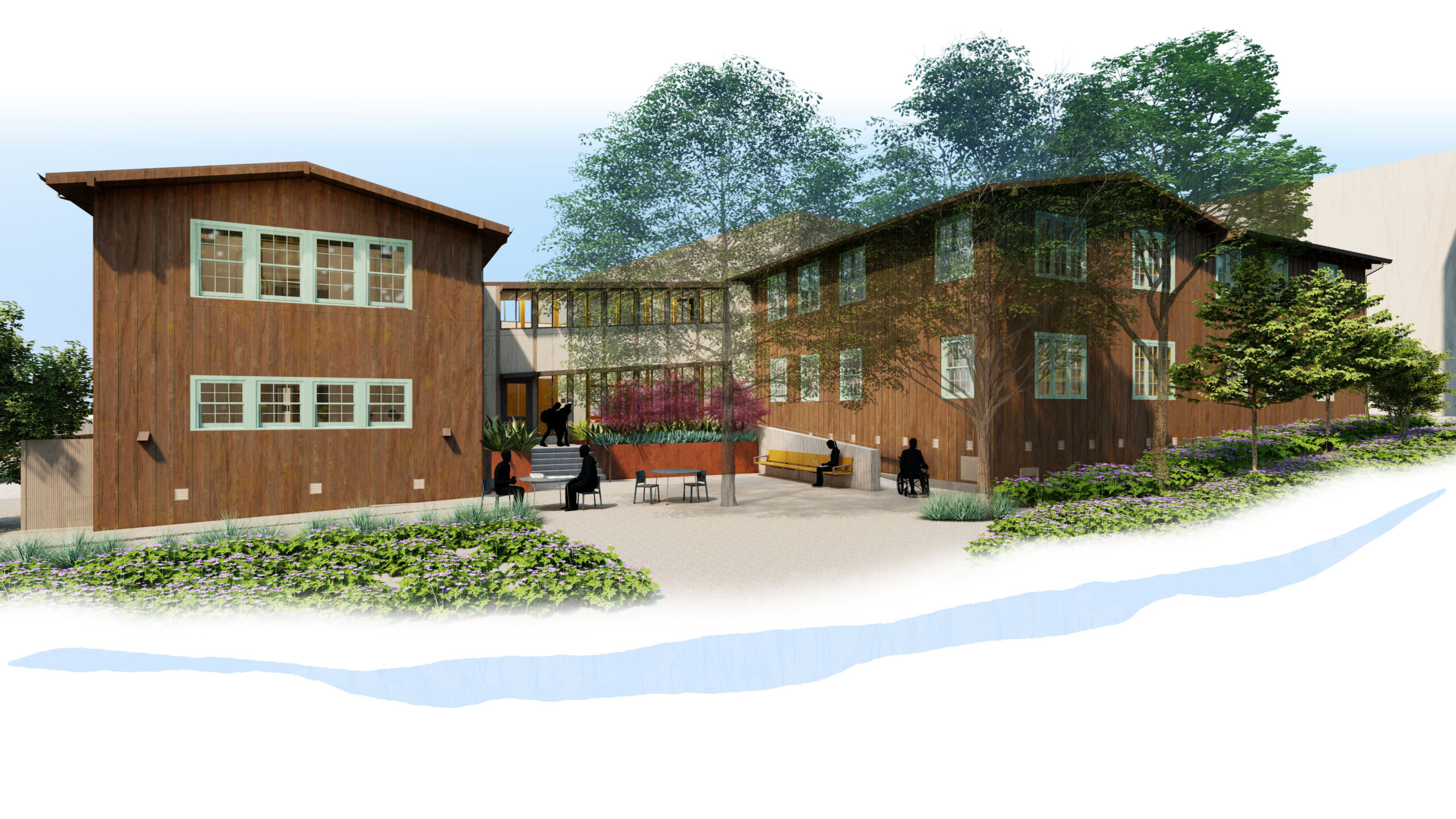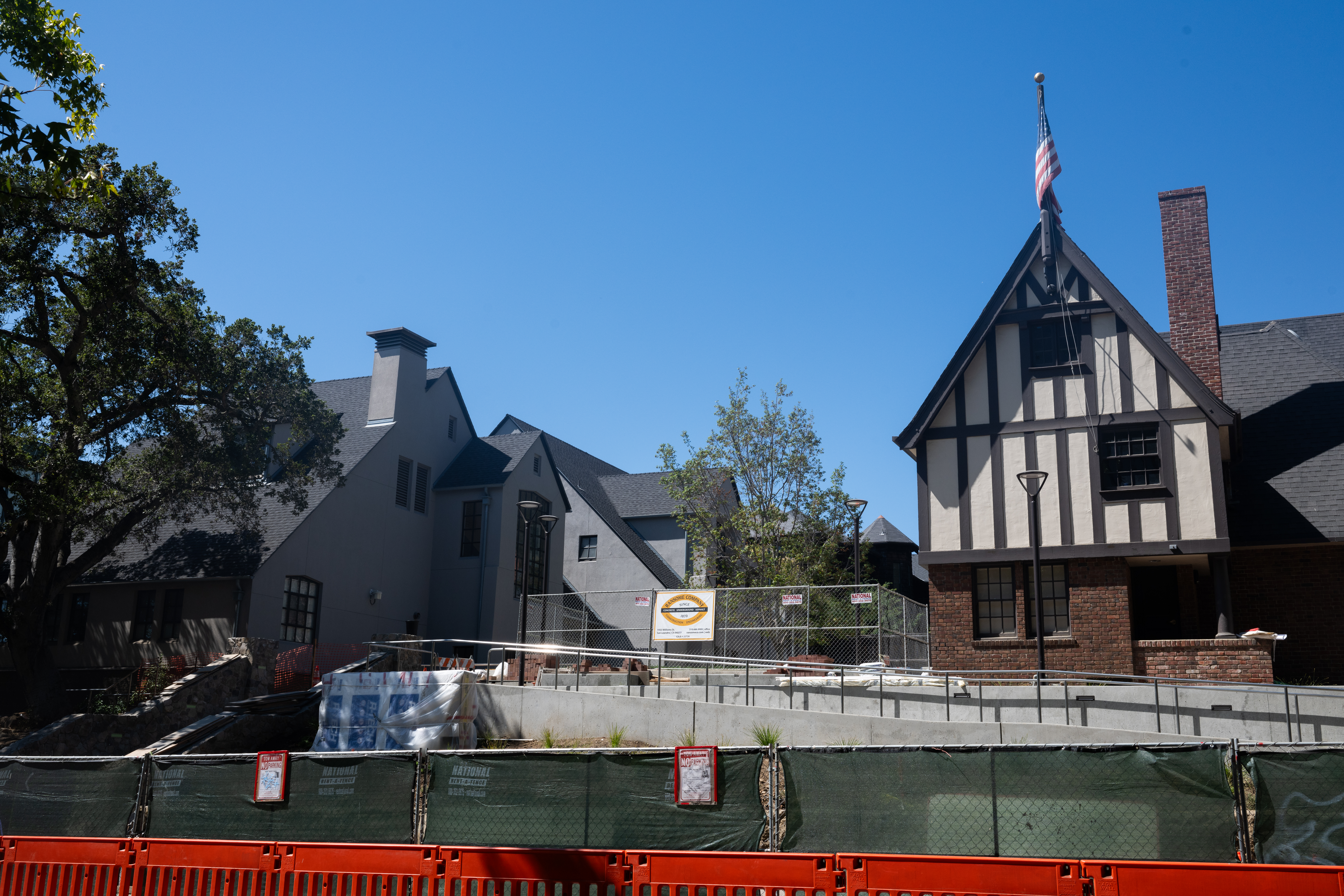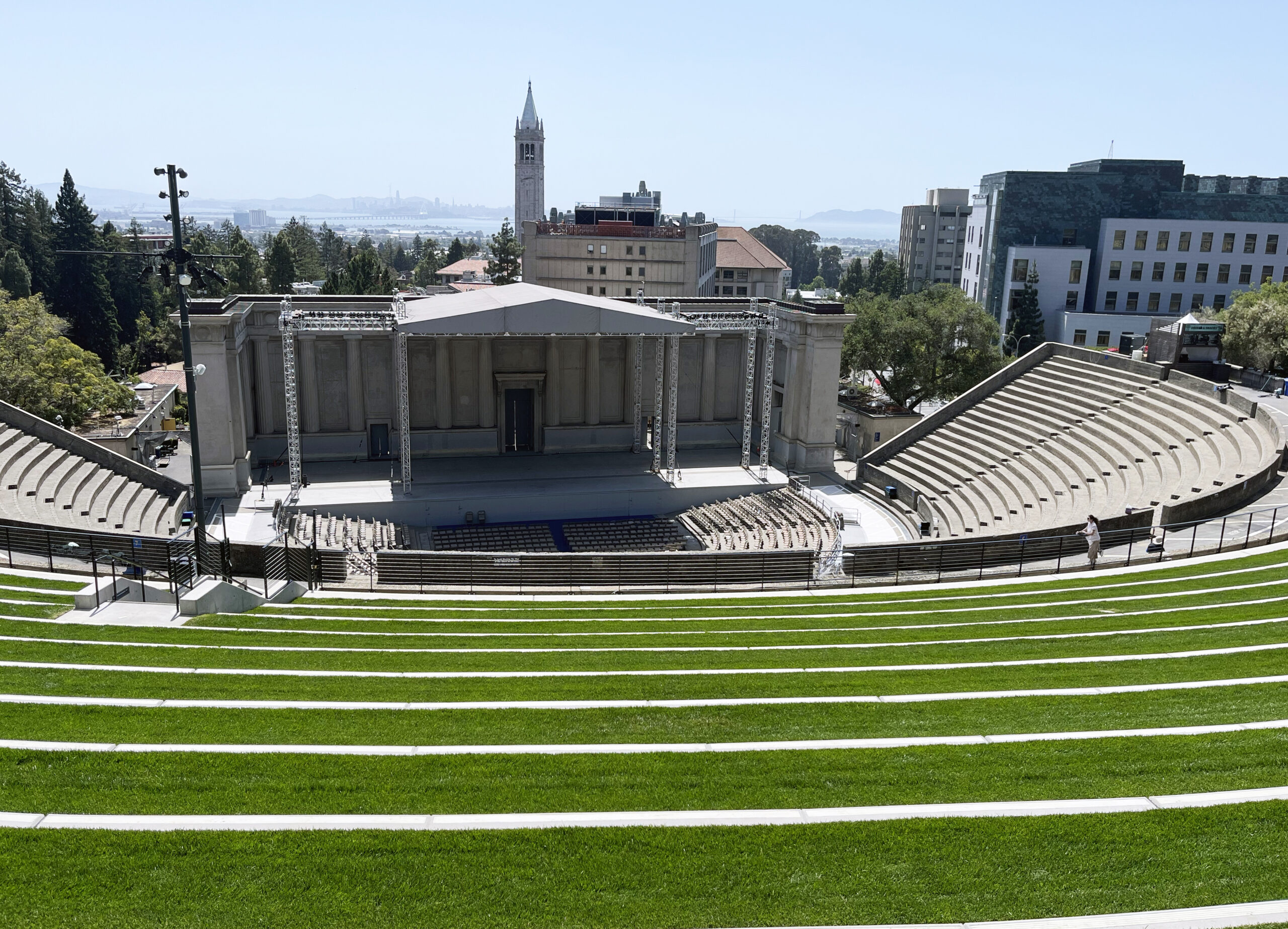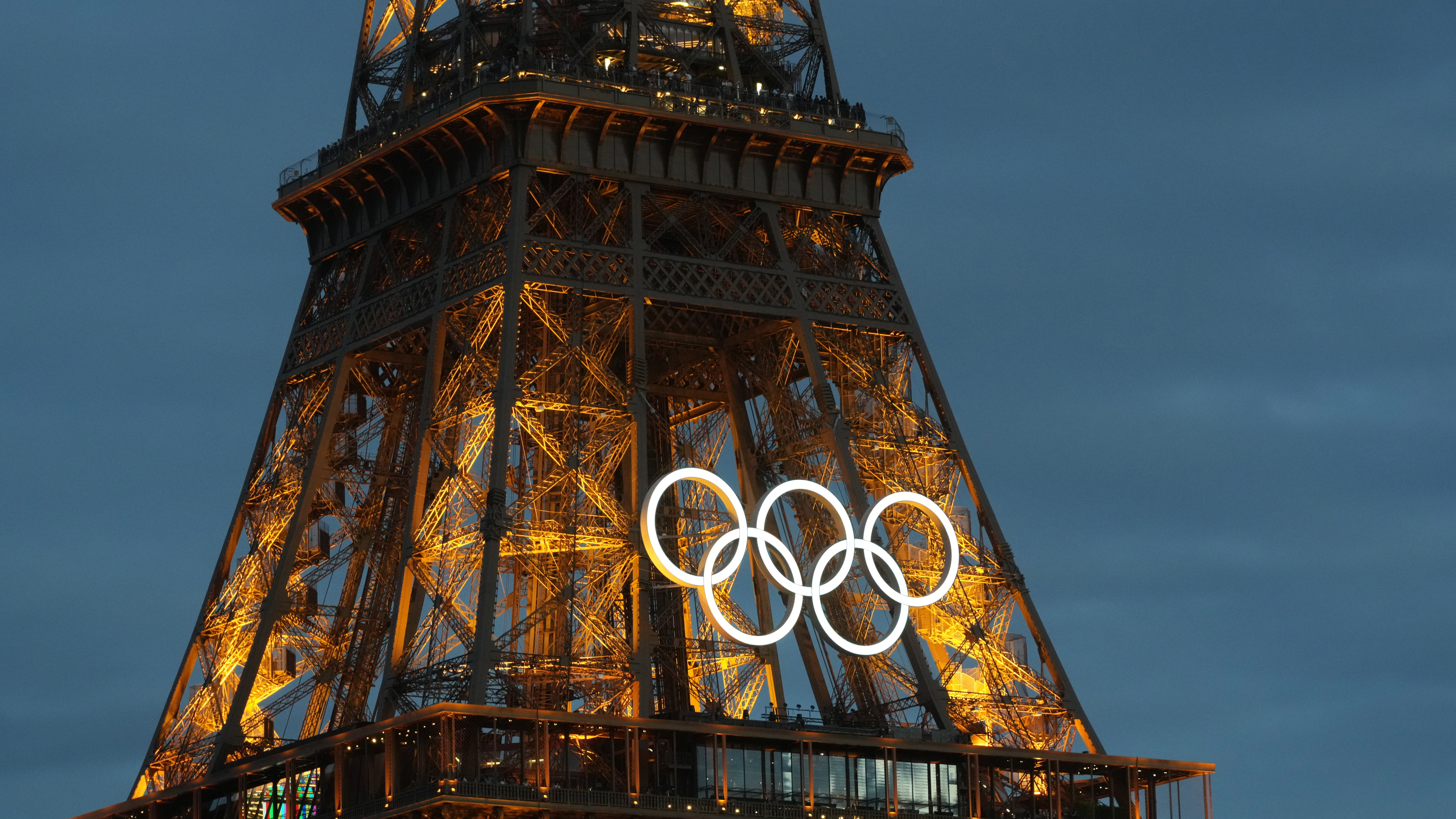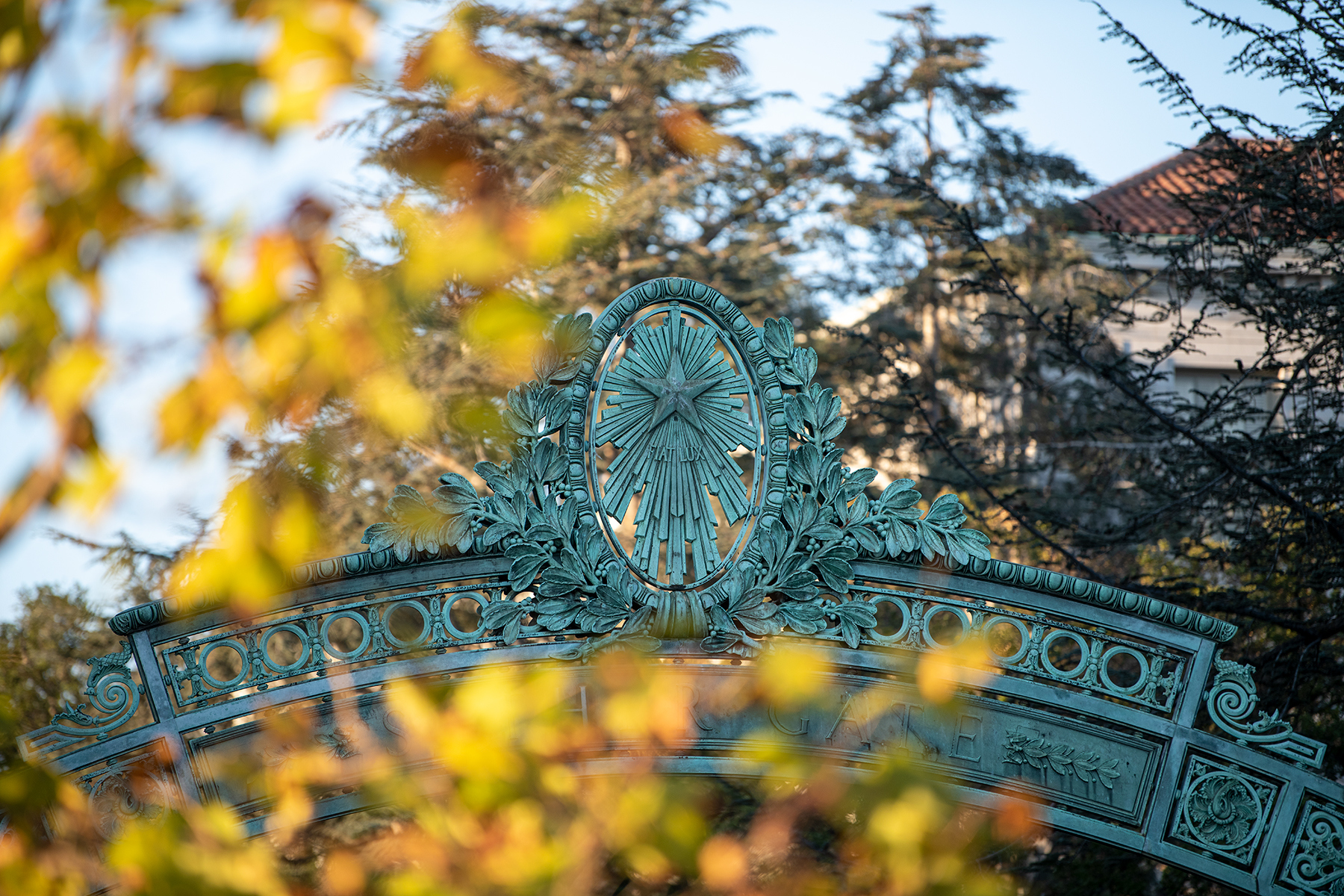New chancellor, new housing and robot ramen help kick off Berkeley’s 2024 fall semester
Chancellor Rich Lyons says civil discourse and bridging political and cultural divides will be a focus this new academic year.
August 27, 2024
A new school year at UC Berkeley means a fresh crop of brilliant students. But this fall, a new chancellor, a new academic department, much-needed student housing, programs to bridge divides, and sports for students with disabilities also are making their debut.
Plus, the campus is cheering the 23 medals won in Paris this summer by Berkeley’s Olympians, the financial aid office’s success helping families hard-hit in the FAFSA fiasco, the Golden Bears in their first Atlantic Coast Conference games, and campus robots created by alumni startups.
Although classes begin tomorrow (Wednesday, Aug. 28), Chancellor Rich Lyons was on campus last week speaking at fall convocation and enthusiastically greeting students moving into Unit 1. Dodging carts mounded with pillows, plush toys and clothes, he offered, “Hi, I’m Rich. I’m new here, too,” to first-year students and their parents.
Student Maegan Ponce from Simi Valley said it was “really cool” that Lyons said hello to her, adding, “He’s very personable.” Once a Berkeley student himself, Lyons posed for selfies, hugged mascot Oski, engaged students in topics including campus finances and innovation, and asked them, “Where can we take Berkeley together?”
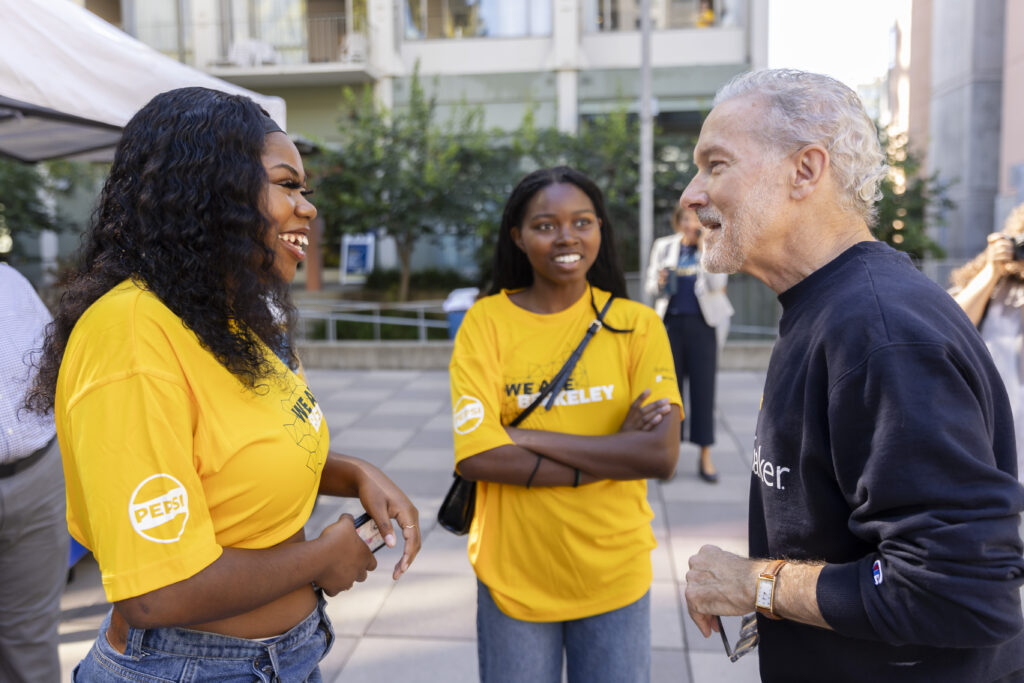
Brittany Hosea-Small for UC Berkeley
One of Lyons’ highest priorities is facilitating change in campus culture with new curriculum and programs related to civil discourse across political and ideological divides.
Examples of work already underway include projects funded by UC-wide grants that address bias and bigotry. Some of the chosen programs at Berkeley are the Bridging Differences program, the Berkeley Bridging Fellowship Program and the Berkeley Judicial Institute.
“We’re also creating new courses about freedom of speech, about critical thinking, effective communication and productive collaboration,” said Lyons, most recently Berkeley’s chief innovation and entrepreneurship officer and co-creator of Berkeley Changemaker.
“In a time of nationwide polarization, we want to equip students with skills to engage across divides and build bridges of understanding with those from different backgrounds and points of view,” said Lyons. “We have an opportunity to both embody and model a way of bringing people together that offers an antidote for so much of what ails our world.”
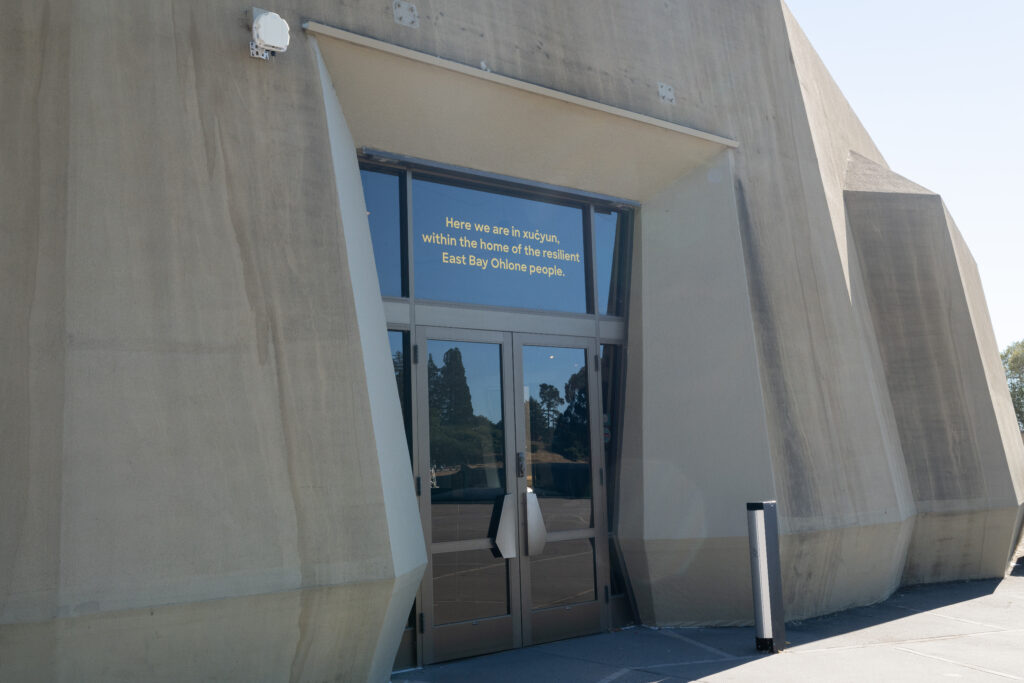
Brandon Sanchez Mejia/UC Berkeley
Bridging relations with the Ohlone people
This fall, look for signs of Berkeley’s expanding ‘ottoy initiative, which seeks to foster understanding of Ohlone people and their culture and to repair relationships between the Ohlone and the Berkeley communities.
The East Bay Ohlone people’s ancestral and unceded homeland includes Berkeley and Albany, where a just-opened campus apartment complex for graduate students is called xučyun ruwway (HOOCH-yoon ROO-why), a name in Chochenyo suggested by local Ohlone people.
At the Lawrence Hall of Science, you’ll find Indigenous science and experience being incorporated into visitor programs, including via new signposts in the Outdoor Nature Lab that are inscribed with the Chochenyo words for and traditional uses of native plants.
Inside the science center, Ohlone language and knowledge are displayed on signage, and a land acknowledgement — stating that the Chochenyo-speaking Ohlone are the traditional stewards of the land — hangs over the entry door.
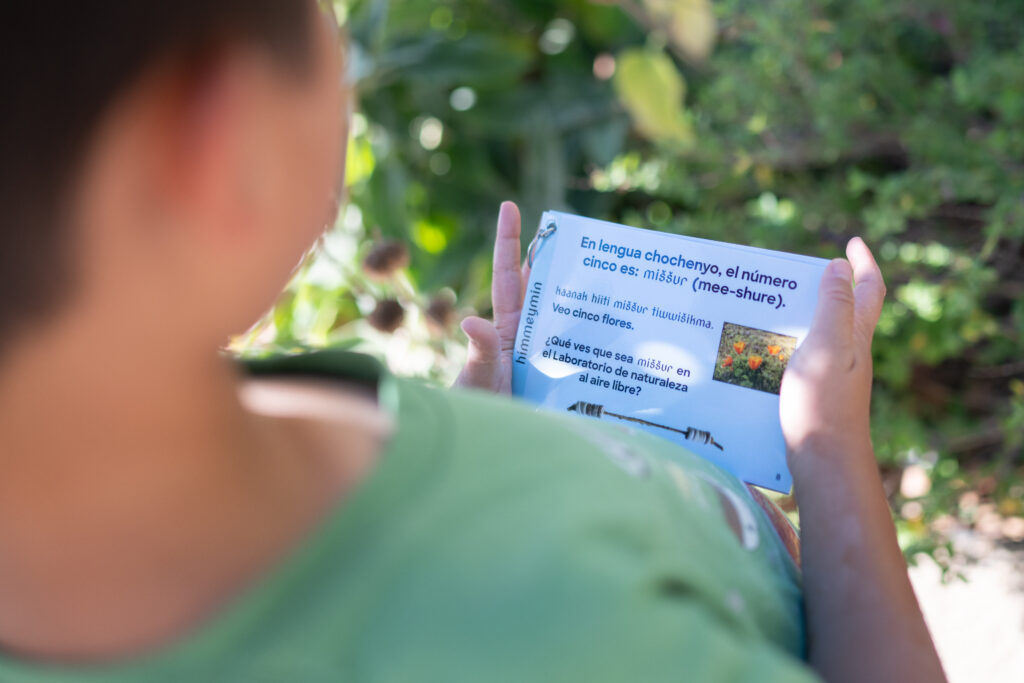
Brandon Sanchez Mejia/UC Berkeley
Other ‘ottoy initiative projects underway include one that engages Ohlone youth and elders in co-designing immersive museum experiences using mixed reality technology. Another is with Berkeley Forests’ 283-acre Russell Research Station, to establish a garden with forestry students that’s managed using traditional Ohlone methods.
“The Ohlone people are still here, and we have much to learn about their culture and ways of knowing and understanding the world,” said Rena Dorph, the science center’s director. “Our goal is to help the public understand this and to foster belonging and inclusion for the Indigenous community.”
“A sustained Ohlone presence on campus and this initiative are bringing positive change that points to a new way forward, to greater understanding and respect for East Bay Ohlone people and our beautiful, enduring culture,” added Vince Medina, co-leader of the initiative.
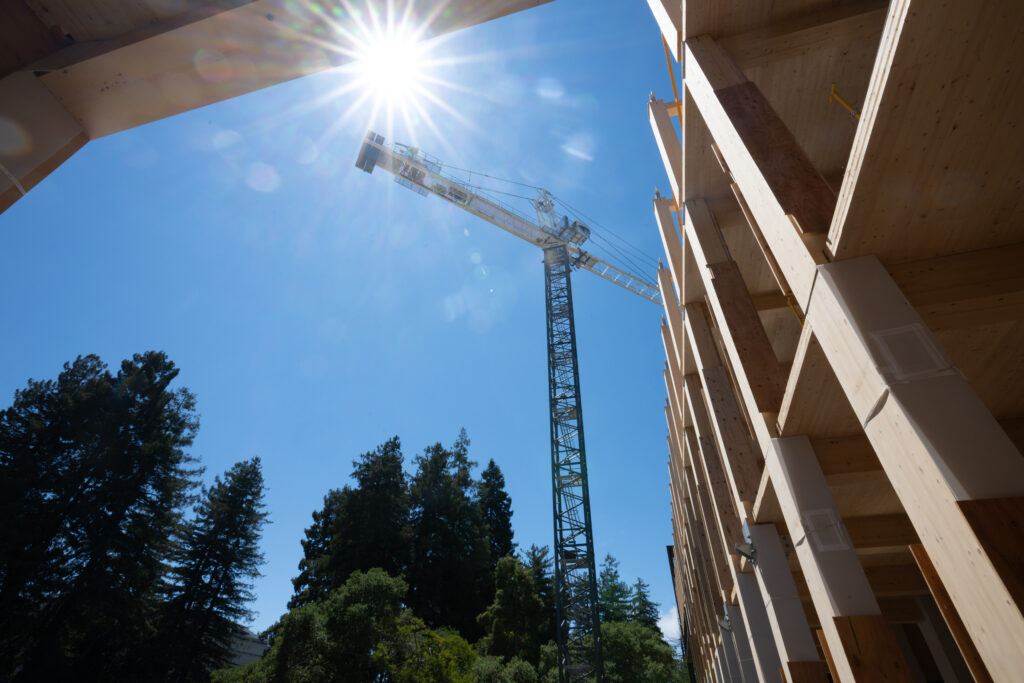
Brandon Sanchez Mejia/UC Berkeley
Campus construction, in abundance
Once again this fall, extensive construction activity on campus is hard to miss, as are impressive projects now complete. Last week, nearly 800 transfer students moved into Anchor House, a new apartment complex designed especially for them and a gift to campus from the Helen Diller Foundation. A second Cal Student Store soon will open on the ground floor, and other businesses will follow.
Just down the street, University Hall is being demolished. In its place, the Bakar ClimatEnginuity Hub will open during the 2027-28 academic year. The donor-funded facility will provide campus innovators with spaces to conduct climate research in areas like renewable energy, carbon capture, greener building materials and agricultural practices. The hub will be part of the Berkeley Innovation Zone, which will include a second building for research in the life sciences and materials science.
In the heart of campus, work crews are busy on the Undergraduate Academic Building. It will open in 2026 with 27 classrooms, Letters and Science Advising and a 400-seat auditorium with a rooftop terrace. It’s being built with mass timber, a lighter, safer and more energy-efficient alternative to traditional concrete-and-steel construction.
Nearby, the 60-year-old Disabled Students’ Program (DSP) is getting a new home in the former Dwinelle Annex. Creekside Center, to be finished in early 2025, is specifically designed for that community’s needs.
“This is an exciting time of transformation at Berkeley,” said Kyle Gibson, director of communications for Capital Strategies. “There’s a strong focus on creating new housing and classrooms for students, facilities that support research and innovation to benefit the greater good, and gathering spaces for our student communities, such as students with disabilities and transfer students.”
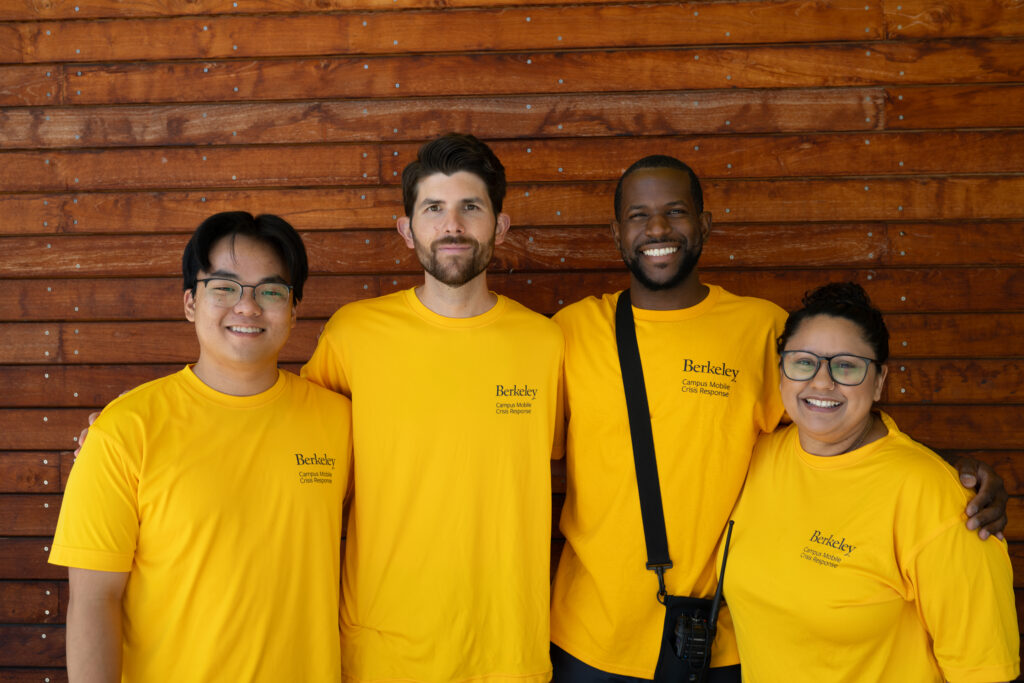
Brandon Sanchez Mejia/UC Berkeley
On duty: Campus Mobile Crisis Response
This fall, a two-person team from University Health Services (UHS) is responding to calls from students and from faculty and staff members on campus property with urgent mental or behavioral health crises. The UHS program, Campus Mobile Crisis Response, had a soft launch last spring in the residence halls.
The team — comprised of a mental health clinician and a mobile health technician — provides comprehensive crisis intervention and mental health assessment at the scene. It works in collaboration with many campus and community partners, with the goal of limiting police involvement, except when necessary for the safety of the person in distress, the crisis team or the community.
For example, the team helps individuals incapacitated due to extreme anxiety or depression, those having suicidal ideation, and friends, roommates or co-workers grieving an on-campus death. It also performs welfare checks.
Berkeley is among a small number of universities nationwide with initiatives like this one, said AJ (Amarjit) Kaur, the team’s program manager and the UHS assistant director of crisis response. Starting in September, the campus’s team will be available 12 p.m. to 9 p.m. Wednesday through Friday at (855) 817-5667.
“We continue to hire and train, and we want to be able to provide seven days of service by spring,” said Kaur. “We recognize what a big transition this is, to come to Berkeley, and it can be even more challenging for transfer students. But we want folks to know, and the parent community, too, that there is a resource here.”
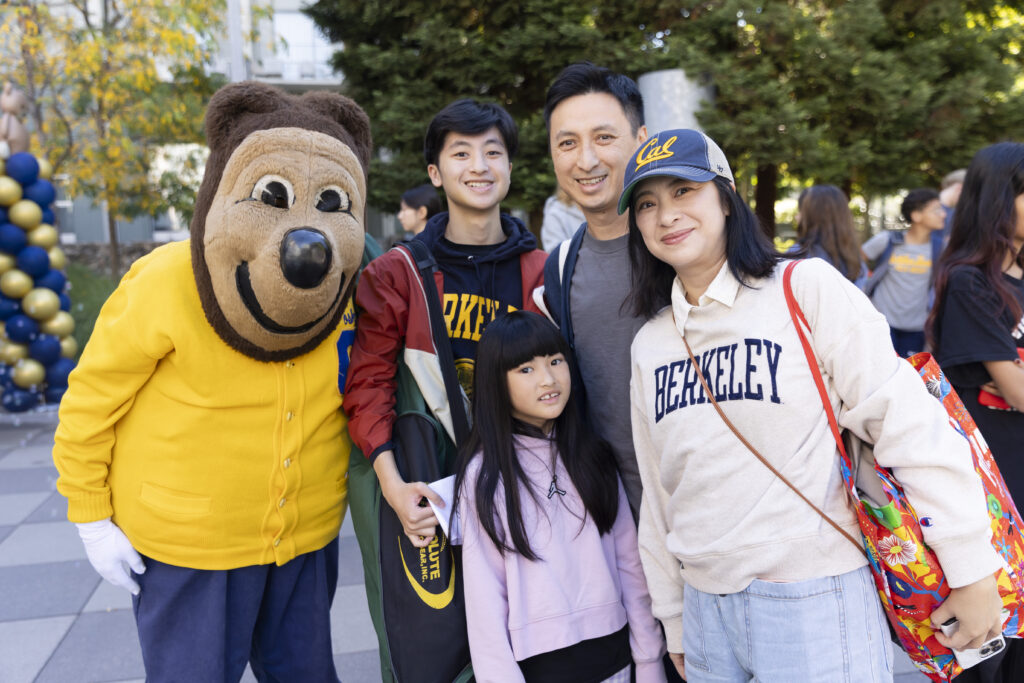
Brittany Hosea-Small for UC Berkeley
Financial aid team to the rescue
In 2020, the FAFSA Simplification Act was passed, requiring the U.S. Department of Education (DOE) to make the federal student aid application easier for students and families to complete. But the overhauled form, made active for the 2024-25 school year, was not ready to release. Tied to IRS reporting, it created significant delays in sending schools the FAFSA applicant data they required to create financial aid packages and admissions offers.
Berkeley’s Financial Aid and Scholarships Office expected the DOE data on applicants to arrive in October 2023, but instead, the data arrived, riddled with errors, in mid-March — two weeks before undergraduate admission offers were to be made to new students.
Cruz Grimaldo, associate vice chancellor and director of financial aid and scholarships, and her team didn’t give up. They leveraged the office’s professional relationships across the UC system and with the DOE, spent tedious hours manually correcting the DOE’s incorrect data, and hosted five Friday FAFSA application workshops this spring for students and families needing help with the new process.
“I’m not exaggerating about how challenging preparing for this year has been,” said Grimaldo. “My team cares deeply about preserving access and supporting our students, so the whole team moved mountains to make sure our students were not negatively impacted.
“I’m so proud of how we moved forward, and our successful disbursement of aid that began last Monday is a testament to the phenomenal work of the team.”
Neuroscience, first new department in nearly 15 years
The Department of Neuroscience has arrived, a response to an explosion of neuroscience research in many disciplines across campus. There’s also a new neuroscience undergraduate major this fall.

Courtesy of Department of Neuroscience
Already, 32 faculty members have switched partially or fully to the department from many disciplines, including biology, psychology, optometry, physics and engineering.
More than 200 postdoctoral fellows, Ph.D. students and laboratory staff also are part of the new department.
“Berkeley now has more than 70 faculty members doing some form of neuroscience on campus,” said the department’s inaugural chair, Dan Feldman. “But like most universities, until now we’ve put those faculty into many distinct departments. … This siloing of faculty gets in the way of major research advances in neuroscience, which happen at the intersections between these traditional disciplines.”
The department has a scope that ranges from molecules to the mind, said Feldman, and includes computational neuroscience and neurotechnology, neural imaging, molecular and cellular neurobiology, and behavioral and cognitive neuroscience. It complements the interdisciplinary work of the Helen Wills Neuroscience Institute, and the two will jointly oversee the neuroscience Ph.D. program, one of the nation’s best, and give Ph.D. students, he said, “a tremendous choice of faculty and research opportunities.”
A first-ever undergraduate major in educational sciences and a minor in Israel studies are among other new areas of study that Berkeley students can choose from this fall.
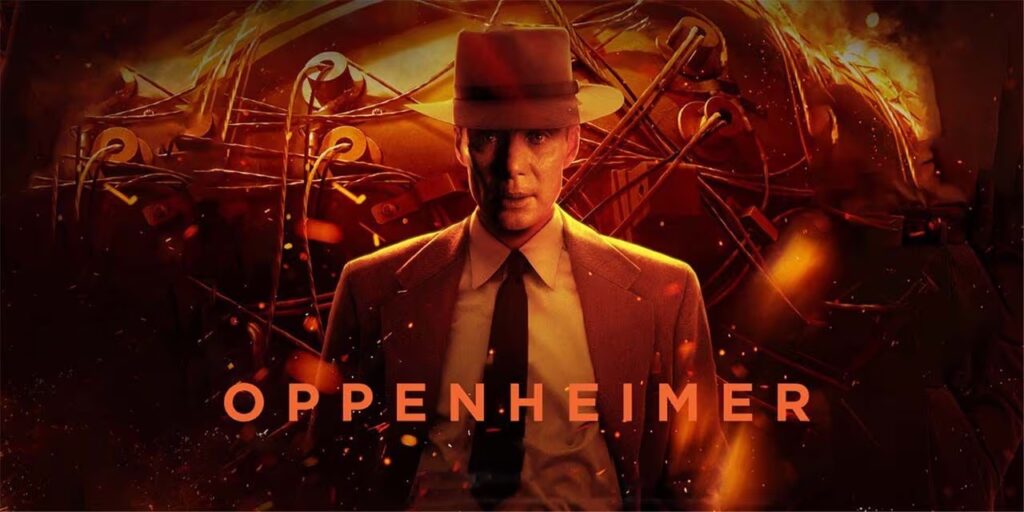
Courtesy of Universal Pictures
On the Same Page: Academy Award-winning Oppenheimer
When the movie Oppenheimer came out last year, it put Berkeley’s world-renowned physics department in the spotlight. The 2023 film, winner of seven Academy Awards, is based on the life and work of J. Robert Oppenheimer, who joined the Berkeley faculty in 1929 and created one of the greatest schools of theoretical physics in the country. He later became known as the father of the atomic bomb.
This year, all new students are watching Oppenheimer as part of On the Same Page, a College of Letters and Science program. Each year, a book, other work of art, or theme is chosen to give new students and faculty members something in common to talk about — socially, in classes and at events that explore the work.
Oppenheimer can be streamed free through the UC Berkeley Library with a CalNet ID. It can also be seen in person, free of charge for Berkeley students, faculty and staff only on Sept. 4 at 5 p.m. and on Sept. 8 at 1 p.m. at the Berkeley Art Museum and Pacific Film Archive. On Sept. 5 at 4 p.m. at Zellerbach Playhouse, a panel of historians, physicists and a filmmaker will discuss the film, Robert Oppenheimer’s contributions to Berkeley, and how Berkeley influenced him.
Adaptive pickleball, anyone? Here come five inclusive sports.
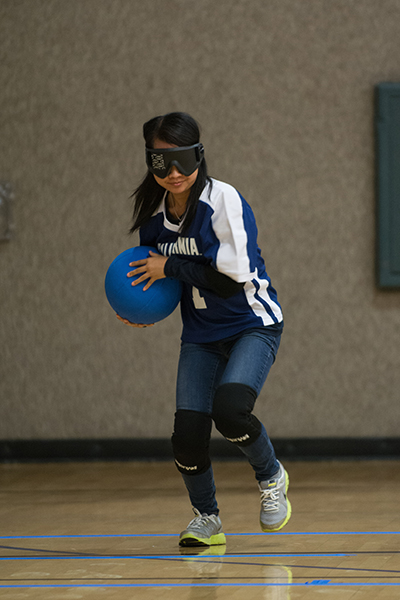
Kevin Ho Nguyen/UC Berkeley
A new DeCal course is launching for students with disabilities and anyone else interested in adaptive recreation. Inclusive Recreation: Adaptive Sports will explore five adaptive sports — wheelchair basketball, goalball, adaptive pickleball, sitting volleyball and adaptive climbing — and meet from 2-4 p.m. on Mondays in the Recreational Sports Facility.
This is just the latest iteration of inclusive sports at Berkeley. A decade ago, the campus debuted goalball and the first competitive college athletic team for students with vision impairment, helping to address what’s been called a civil rights issue — a lack of inclusion and opportunities for students with disabilities in fitness and sports.
Now, multiple sports, in addition to goalball, will be offered at Berkeley, and staff and student instructors hope to learn what demand there is for future inclusive programming.
The course is part of the Exercise is Medicine (EIM) program, a collaboration among University Health Services, newly-named Berkeley Recreation and Wellbeing, and the School of Public Health to help students develop healthy habits and fitness routines.
“At a time when inclusivity and holistic well-being are paramount, Berkeley’s commitment to adaptive sports and the EIM program empowers all students to engage in physical activity,” said Dr. Marlon Maus, an adjunct professor in the School of Public Health and faculty adviser for the course.
“This fosters a campus culture that values and supports the diverse needs of its community.”
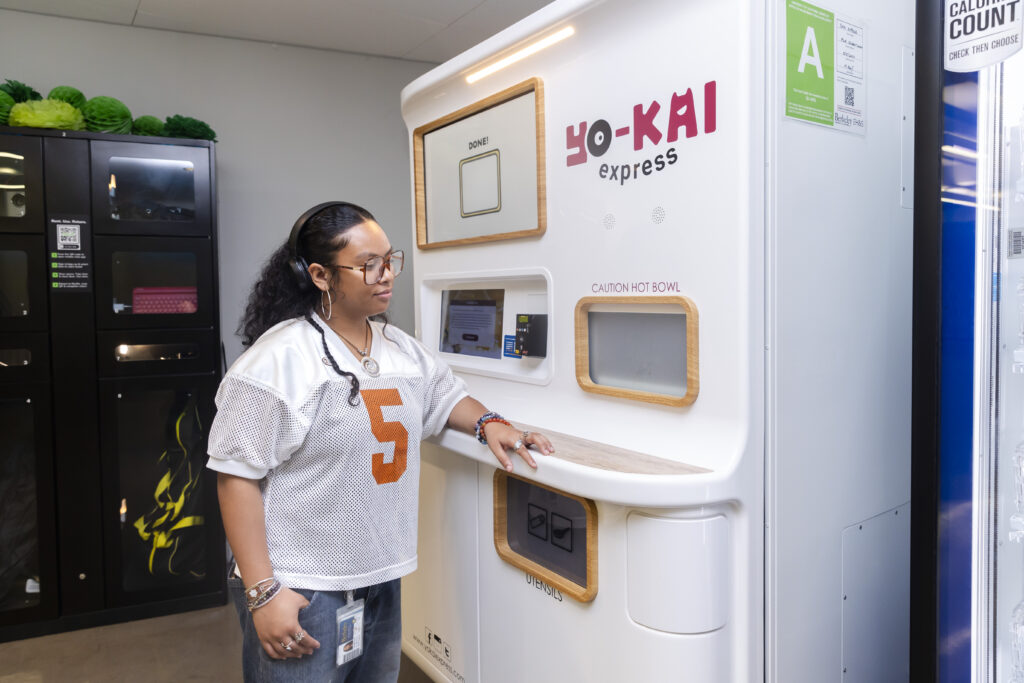
Brandon Sanchez Mejia/UC Berkeley
Updates to “the campus living room“
The Student Union’s footprint is growing this school year with the addition to Anchor House of Berkeley Art Studio West and a second Cal Student Store.
The art studio, on Anchor House’s second level, will offer instruction starting Sept. 3 in printmaking, crafting and textile arts, jewelry-making, and drawing and painting. The original Berkeley Art Studio in the Student Union has expanded its program in ceramics, with two new kilns and a reconfigured studio space.
The new store, expected to open during the first half of fall semester, will occupy about 2,500 square feet on the ground level of Anchor House and feature best-selling items from the Cal Student Store in the Student Union. It also will offer unique Anchor House-specific merchandise — including tote bags, T-shirts and hats — requested by the Helen Diller Foundation, which funded Anchor House’s project design, construction and furnishings.
Back at the Student Union, check out a fun new photo booth on the first floor of the Martin Luther King Jr. Building and another in the nearby Bear’s Lair Tavern. The Ambi booths, created by alumni, fit the Student Union’s “Born at Berkeley” initiative.
“Over the course of the last three years, we’ve really tried to support Berkeley founder startups, whether they’re created by students or alumni,” said Ryan Sessler, Student Union business relations manager. They include Quokka Brew, a cold, canned, jitter-less coffee drink sold at Goldie’s Coffee, and brd BOT, a robotic vending machine that will open later this semester on the MLK Jr. Building’s first floor and serve hot, crispy, fried food in two minutes.
Another alumni-designed robot recently added to the Student Union’s growing Ven Den is Yo-kai Express, which prepares hot ramen in 90 seconds and other items, even desserts.
Sessler said the Student Union is always striving to be “a true campus living room,” a lively, less academic, extracurricular place where students can shake off stress and unwind with friends.
Anne Brice, Jason Pohl and Robert Sanders from the Office of Communications and Public Affairs contributed to this report.
